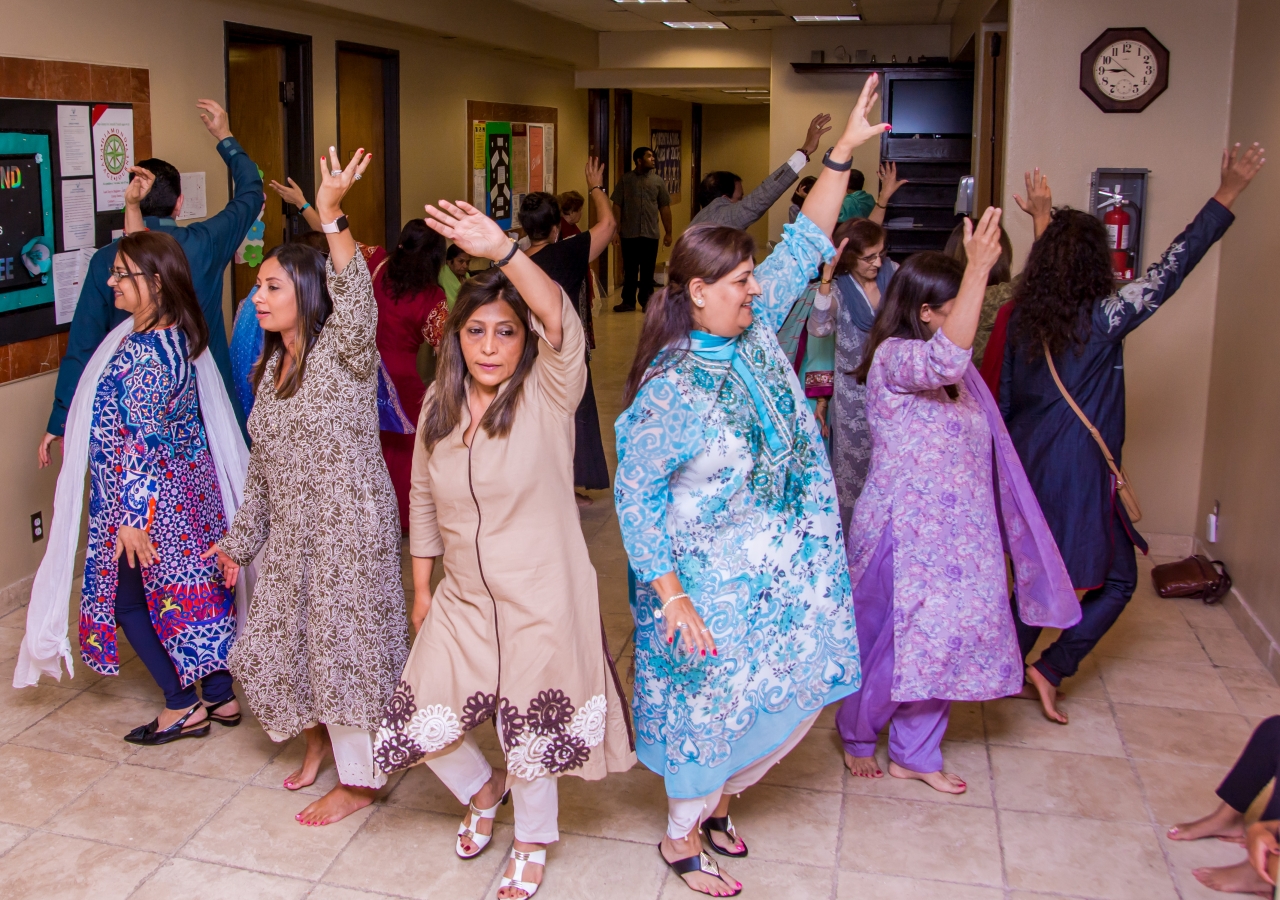A new dance style is breaking through barriers and connecting the Jamat. But before you are exposed to it, be warned — the steps are addictive and the tunes may linger in your head for days.
It’s called the One Jamat Celebration Dance — and it is contagious.
The Choreography: A True Patchwork
Stepping on a medley of cultural beats, you will find 73 US Jamatkhanas in harmony. The dance and music is a fusion of styles and tunes common in South Asia, Central Asia, East Africa and the Middle East. The artistic vision was to represent diverse countries that make up the US Jamat, while still remaining true to the authenticity of each region.
“From the controlled upper body structure in Tajikistan to the fluid moves from Iran, each country's dance technique is so different,” said Alishbah Lakhani, one of the choreographers. “Our goal was to choreograph a dance that stayed authentic to each culture, but also came together seamlessly as one simple dance.”
As the Jamat celebrates the five fun steps of this communal dance, it can be seen that it transcends age and gender barriers. Another choreography goal was to create a dance that anyone — man or woman, child or senior — can learn within minutes.
The One Jamat Force
The concept of One Jamat builds upon the evident desire of our Jamat to learn from each other and develop camaraderie.
“To hear stories from countries around the world — not from Google, but rather from the person who has lived through it — is indescribable,” said Alishbah. “The first time the group met and shared our stories, we were all in tears! What brought us all together is our love for our Imam and blessings of the Diamond Jubilee.”
On the days leading up to July 11, pre-Jubilee celebration events at Jamatkhanas were not complete without the Jamat coming together to learn and teach each other the steps to the dance. Everyone wanted to learn it for the launch festivities on July 11, or perhaps just for fun.
“When I see everyone coming together after Jamatkhana ceremonies to learn the dance, it strengthens my personal sense of belonging in our community,” said Shafiqah Pirani, who was spotted gracefully twirling to the beats of the dance. “It also reminds me how a simple expression through dance can be such a big gift to our Imam when presented in unison by his spiritual children.”
Dilafruz Saidibragimova, one of the One Jamat Celebration Dance (OJCD) instructional video dancers, said: “People haven't before tried Pamiri, Afghan, and Indo-Pak steps together. We are brothers and sisters and now we can dance together in this Diamond Jubilee. I love the OJCD.”
The Musical Composition: A Harmonic Fusion
A dance is not complete without the beats. The sounds of rubab, sitar, dholak, tabla, oud, ney and bansuri can be heard in the musical composition — a true medley of various cultural traditions.
“The music doesn't confine to specific genres — you can call it a fusion,” said Shariq Lalani, producer and director of the music for the dance. “Every individual involved in the making of this musical piece brought something unique to the table. This piece serves as an example of a real collaboration between Ismaili musicians of the US.”
For the 20-year-old Shariq, this project wasn’t only an outlet to express his creativity, but it was also a platform to grow.
“As a music producer this experience was one of a kind. The concept of producing music in various genres and arranging ethnic instrumentation was a bit of a challenge. I went through a lot of research and studied about the music of these regions, personally met and recorded demos of these artists who belonged to that region, before I even started to write my own interpretation of the music,” Shariq said. “It was a gratifying experience to learn from Ismaili musicians. I think I have made some lifelong connections with my brothers and sisters in faith, which will lead to a lot of future collaborations, inshallah.”
The Launch and What Followed
An instructional video was first recorded in Houston, then rolled out across the US Jamatkhanas virtually, as well as in-person through instructional workshops. “When learning the dance, two things stood out to me — how fluid the steps are and the sheer happiness in the faces of my fellow dancers,” said Aadel Sarfani. “To me, these aspects highlight the beauty of the assimilation of all the cultures together as a true One Jamat.” You may be able to recognize Aadel from the famous instructional video — he is the one is bright blue!
The launch of the One Jamat Celebration Dance created so much excitement in the US, that Canada couldn’t avoid joining in the fun.
“This dance has been developed in the USA and we would like to adopt it in Canada. Our American brothers and sisters have been very generous in sharing this resource with us and we would like to acknowledge their creativity and generosity,” notes the website of the Ismaili Institutions for Canada. Tanzania and Australia/New Zealand Jamats are also using the dance for their Diamond Jubilee celebrations.
So which country is next?












